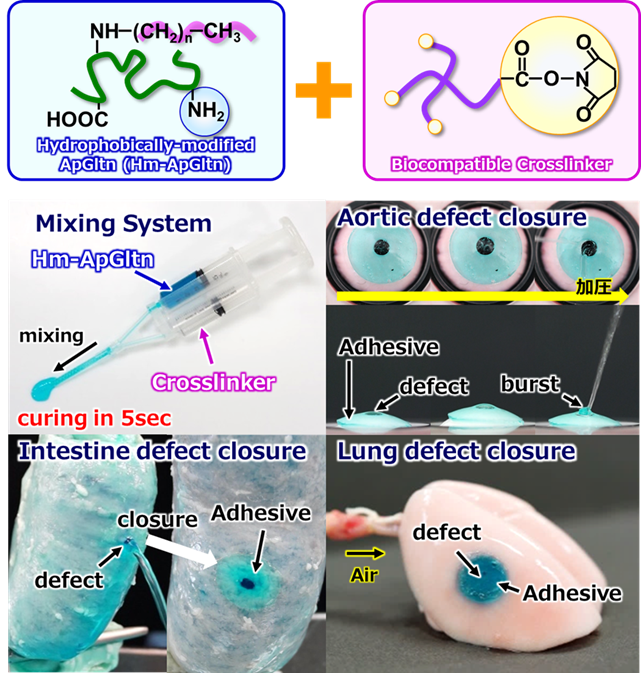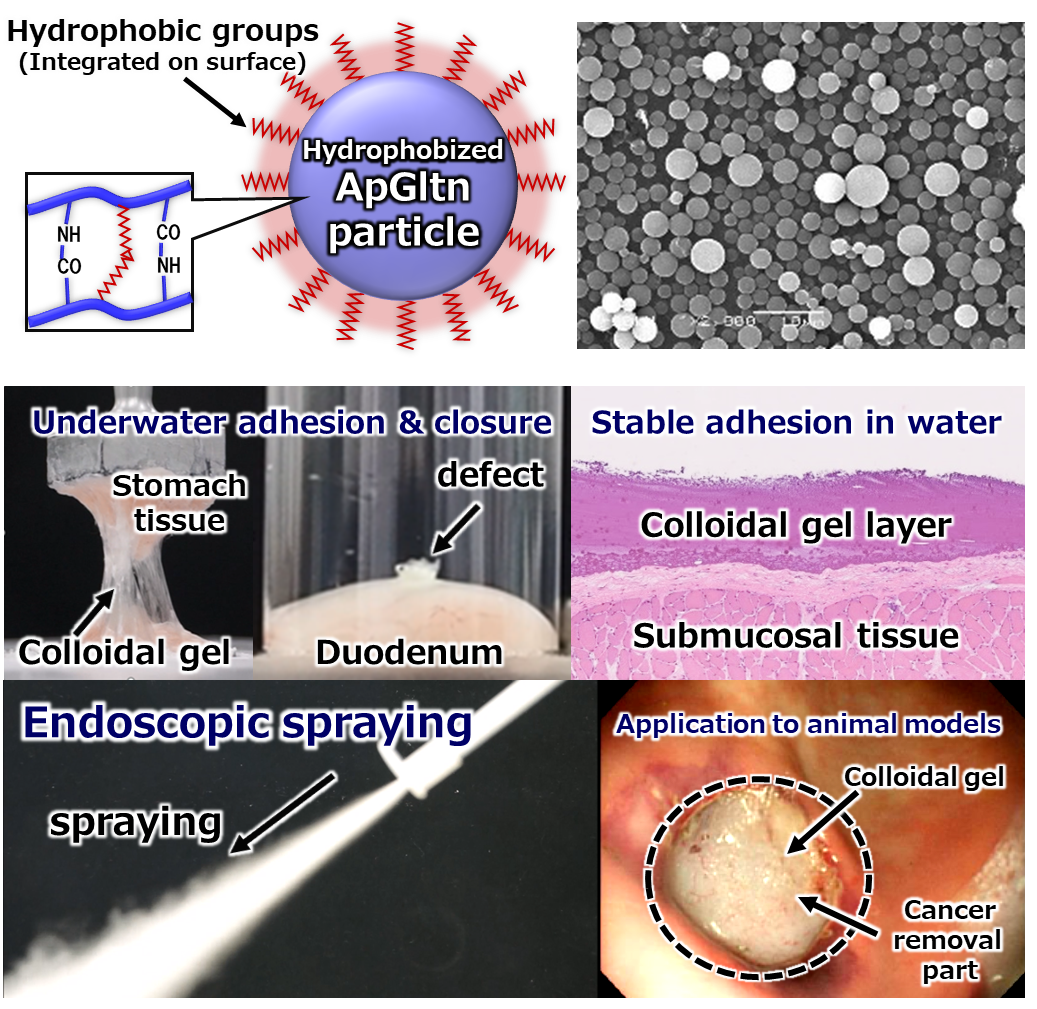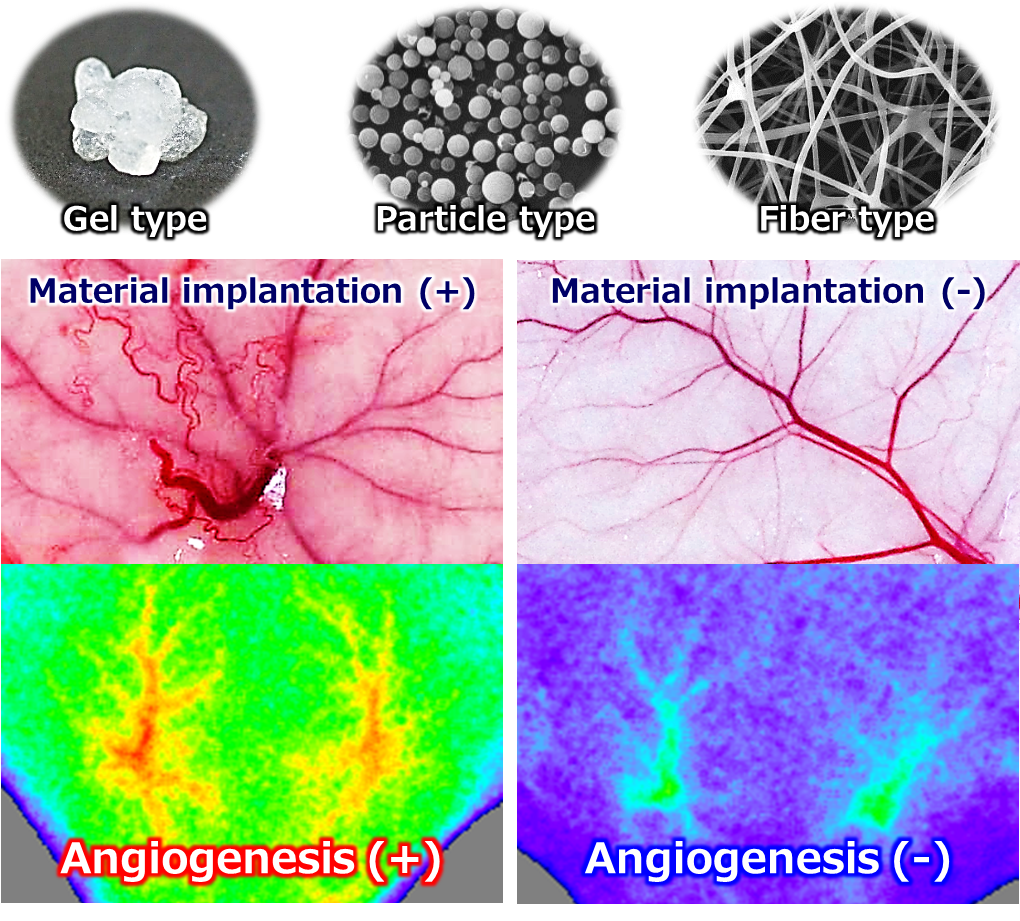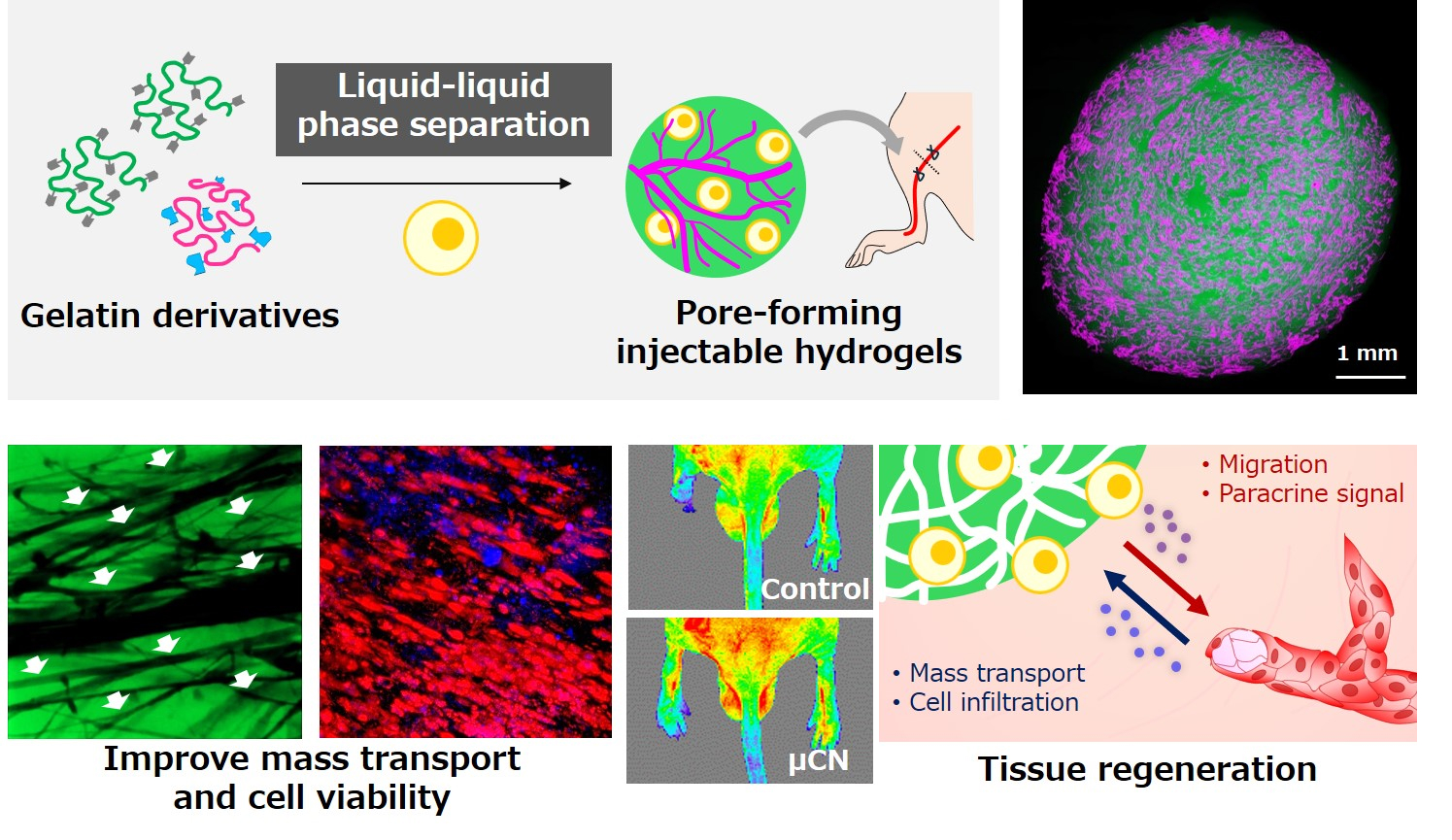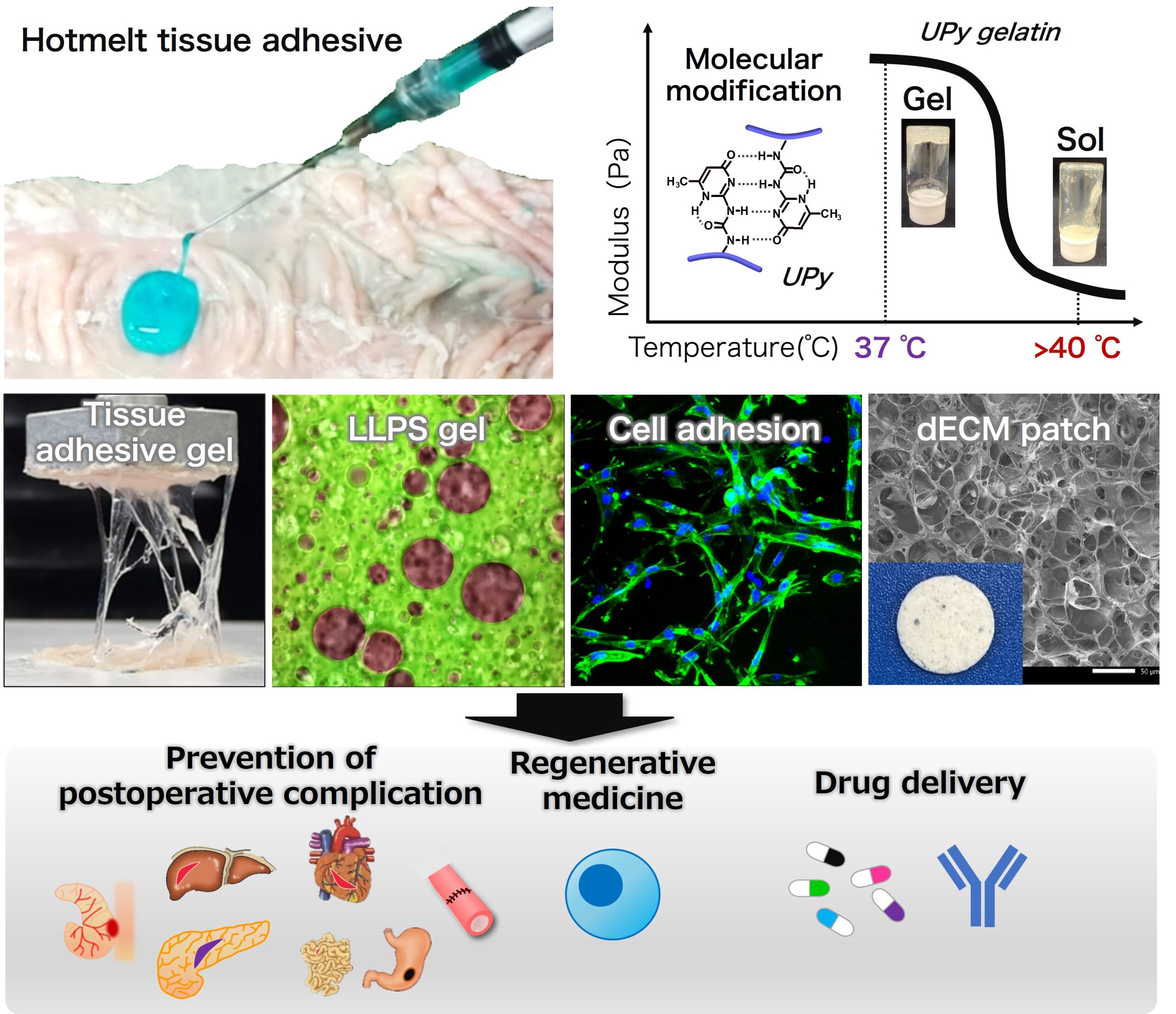With “adhesion” and “interface” as keywords, we conduct basic research on biomaterials that induce tissue regeneration and healing through their own functions. We are actively collaborating with medical and dental institutions and companies to expand from basic to applied research.
research
Development of high-strength, biocompatible adhesives that adhere to moist tissue/organ surfaces
We are developing a high-strength, biocompatible adhesive consisting of two components: hydrophobically-modified Alaska pollock gelatin (hm-ApGltn), a partially hydrophobic form of ApGltn that exhibits fluidity even at low temperatures and high concentration, and a biocompatible crosslinker. When the two components are mixed, the adhesive cures within about 5 seconds and adheres to the surfaces of tissues and organs such as the aorta, large intestine, and lungs under wet condition, preventing blood and air leakage. It is also designed to be broken down and absorbed by the body as it heals, eliminating the need for re-operation.
- References
- Colloid Surf B, 220, 112946 (2022)
J Biomed Mater Res A, 110, 909-915 (2022)
Acta Biomater, 121, 328-338 (2021)
Int J Biol Macromol. 163, 2365 (2020)
Biomater Sci 5, 982 (2017)
Development of adhesive particles to coat wounds after removal of early-stage gastrointestinal cancers
We are developing particles that adhere to damaged gastrointestinal tissues after removal of early-stage gastrointestinal cancer by endoscopy to form a gel layer and promote tissue regeneration. The particles can be easily delivered through an endoscope to the area where cancer was removed. After adhering to and coating the tissue, the particles are degraded and absorbed by the body, eliminating the need for reoperation after tissue repair. It is expected to be applied as a medical material to prevent complications such as stricture after removal of esophageal cancer and perforation of the colon and duodenum after endoscopic surgery.
- References
- Acta Biomater, 159, 83-94 (2023)
Acta Biomater, 149, 139-149 (2022)
Mater Sci Eng C, 123, 111993 (2021)
Acta Biomater, 99, 387-396 (2019)
Small, 15, 1901566 (2019)
Development of growth factor-free angiogenesis-inducing materials
Focusing on the fact that lipopolysaccharide (LPS), which promotes vascular induction in the body, has a dodecyl group, we have prepared dodecyl groups-modified Alaska pollock gelatin (ApGltn) with various types (gels, particles, and fibers) and demonstrated that angiogenesis is induced by the same TLR4-mediated mechanism that promotes secretion of vascular endothelial cell growth factor as LPS. It is expected to be applied as a material for regeneration of large organs that require formation of vascular network.
- References
- ACS Biomater Sci Eng, 7, 4991-4998 (2021)
RSC Adv, 10, 24800-24807 (2020)
NPG Asia Mater, 12, 48 (2020)
J Tissue Eng Regen Med, 13, 2291-2299 (2019)
Macromol Biosci, 19, 1900083 (2019)
Development of porous injectable gels and their application in regenerative medicine
In cell transplantation therapy, it is challenging to improve graft survival. We have therefore designed a porous injectable hydrogel using liquid-liquid phase separation control technology and developed a new material to improve graft survival and cell viability. This material has potential applications in regenerative medicine as it can improve the therapeutic efficacy of cell transplantation.
- References
- Biomaterials, 305, 122451 (2024)
Biomacromolecules, in acceptance
Polym J, in press
Development of 1-component hot-melt tissue adhesive
We are developing a medical adhesive that heals post-surgical wounds simply by applying heat. By controlling the intermolecular interactions of gelatin, we have designed a tissue adhesive that introduces a 'hotmelt' property that liquefies upon warming and hardens at body temperature. This new adhesive is a one-liquid type that is easy to handle, and has excellent characteristics as a medical material, such as tissue adhesiveness, biocompatibility and high preventive effect against postoperative complications.
- References
- Acta Biomater, 146, 80-93 (2022)
ACS Appl Bio Mater, 5, 10, 4932–4941 (2022)

